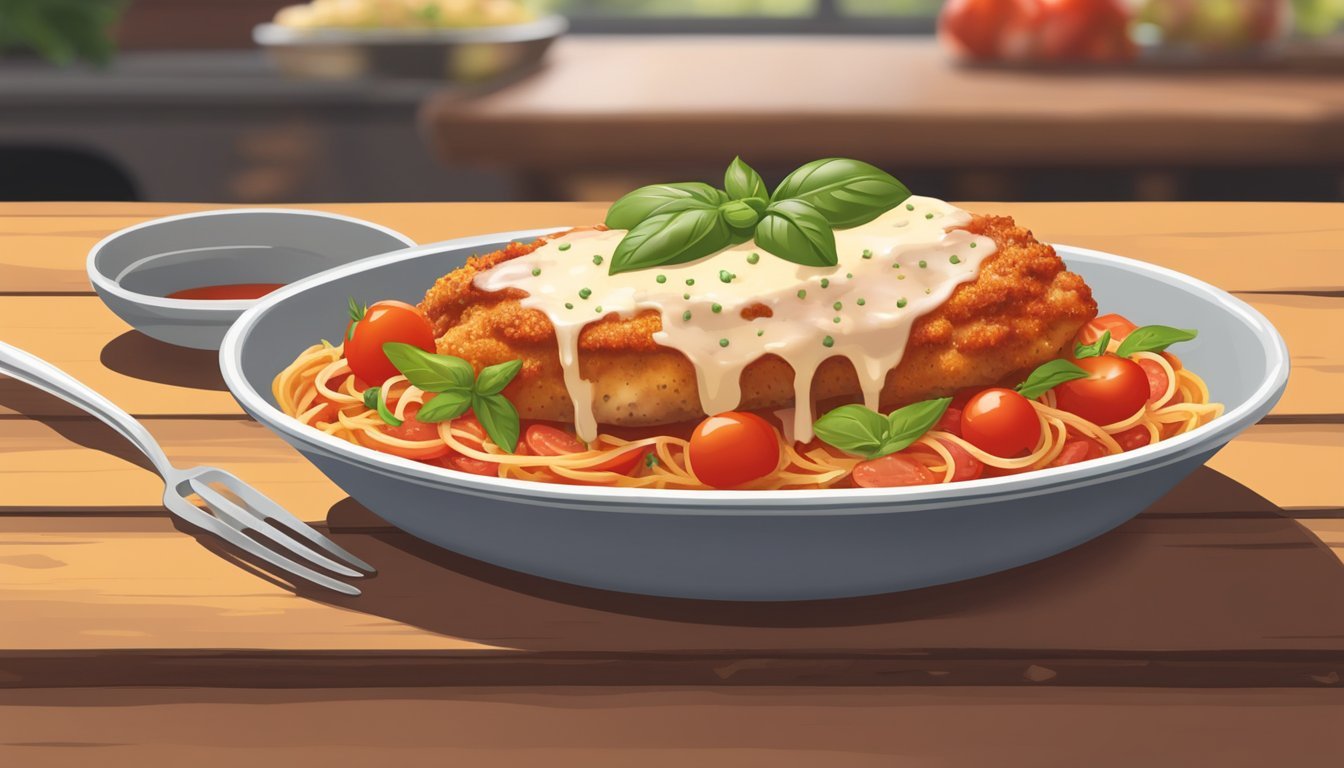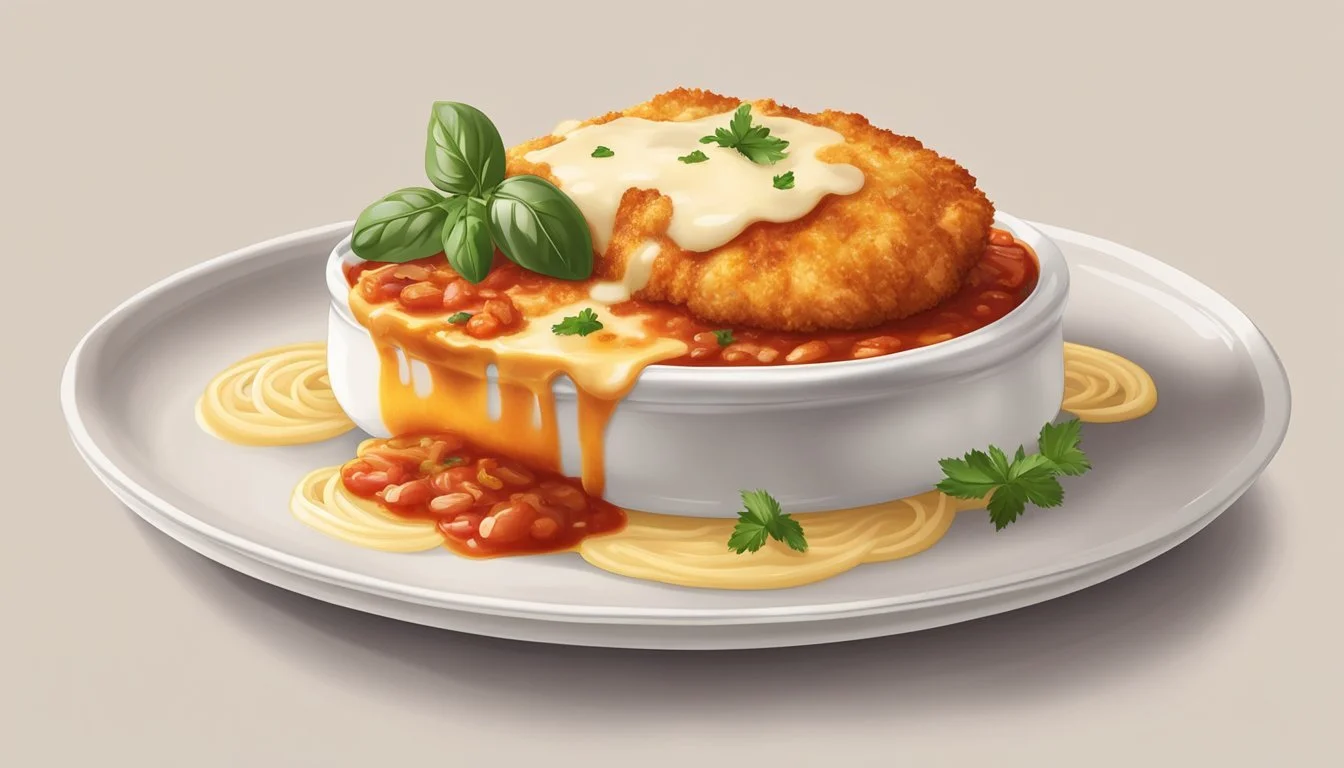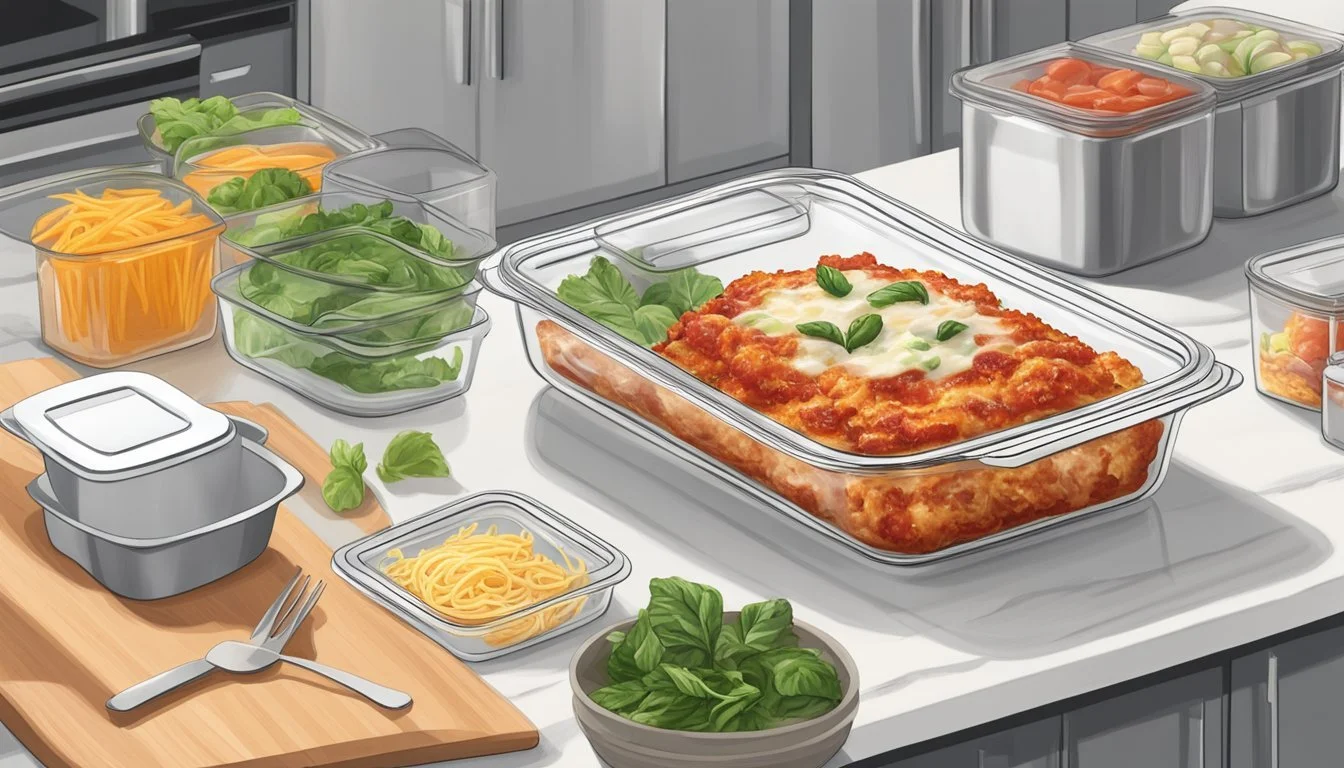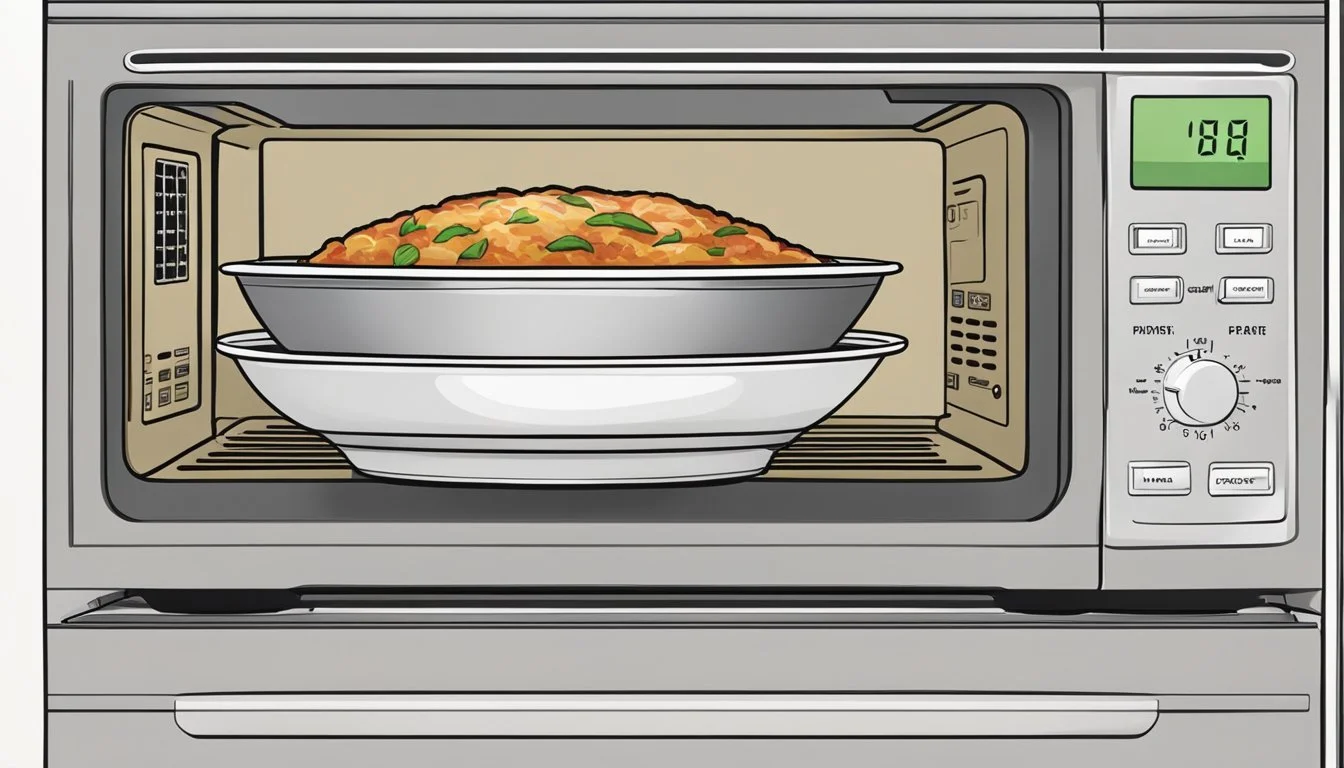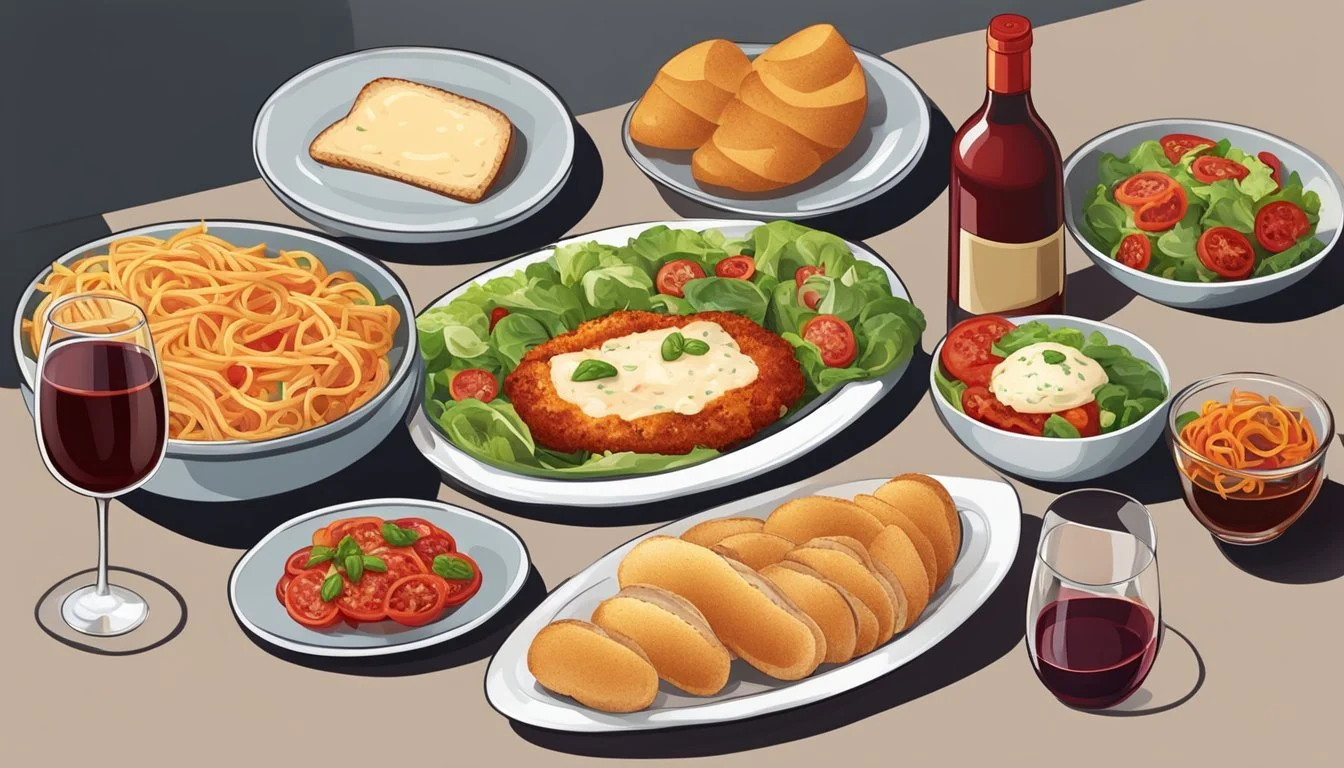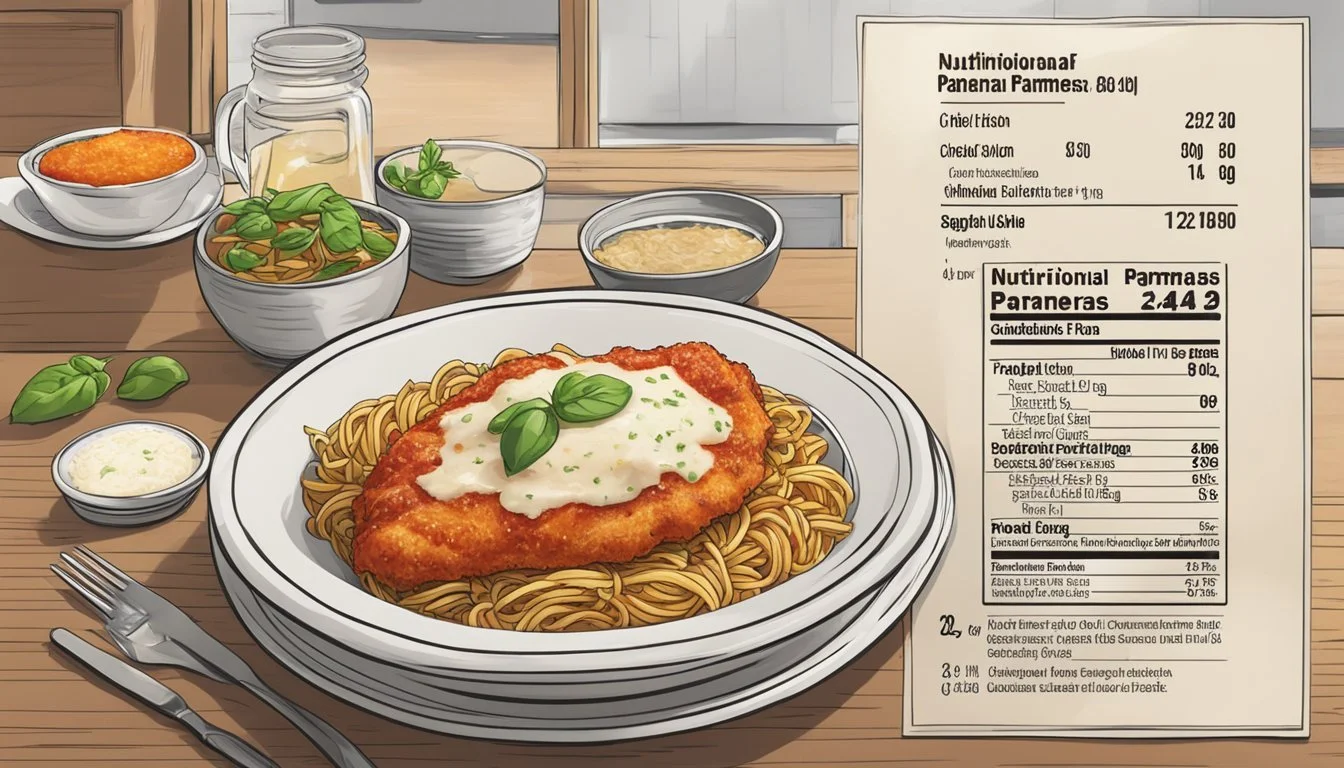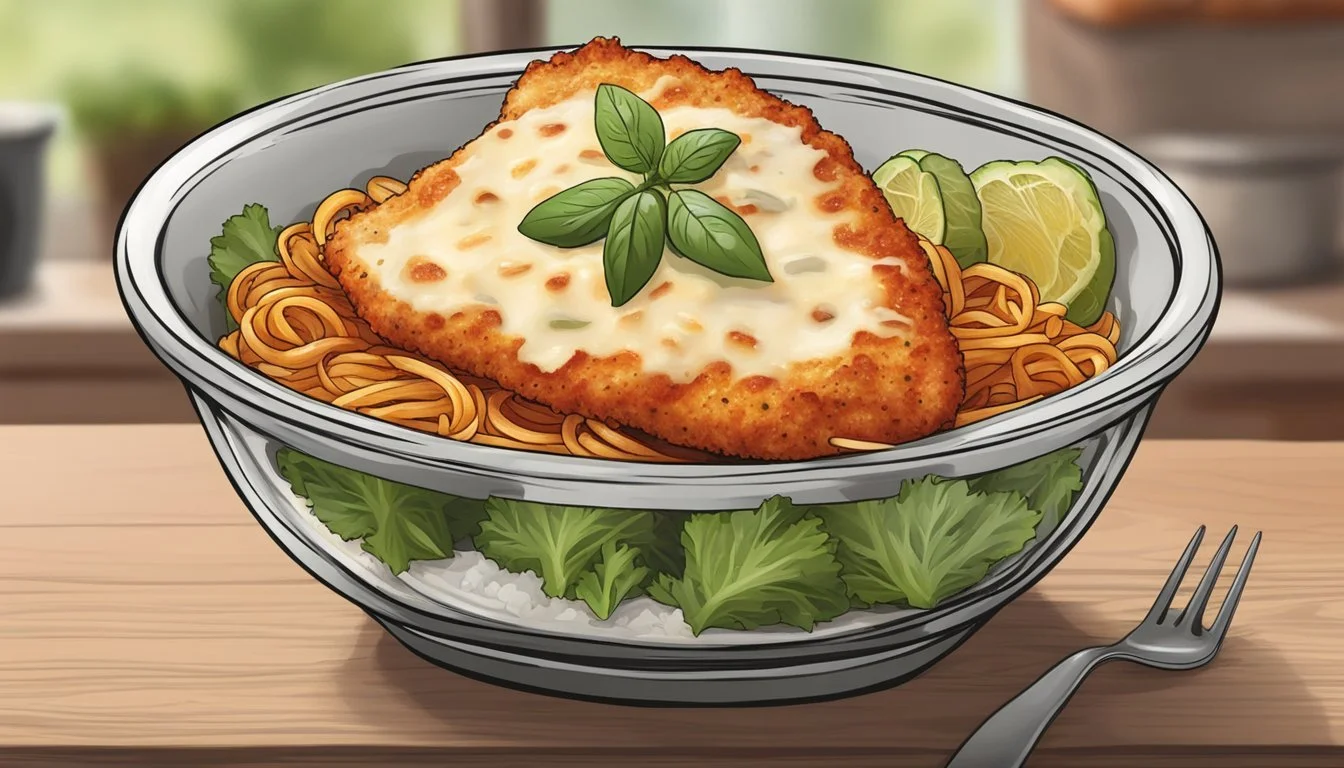How Long Do Chicken Parmesan Bowls Last?
Shelf Life and Storage Tips
Chicken Parmesan bowls are a popular and convenient dish that combines tender breaded chicken with rich marinara sauce and melted cheese, all served over a bed of pasta or healthy grains. For those who love meal prepping, understanding the shelf life of this dish is essential. When stored correctly in an airtight container, chicken Parmesan bowls typically last up to 4 days in the refrigerator.
It's crucial to store the chicken Parmesan bowls promptly after cooking to maintain their quality. Keep the bowls in the fridge at a consistent temperature to ensure they stay fresh longer. If there are any signs of spoilage, like an off-odor or visible mold, it’s best to discard the dish immediately.
Storing chicken Parmesan bowls properly not only preserves their flavor but also ensures they remain safe to eat. By following these simple guidelines, you can enjoy this Italian classic for several days without any worries.
Overview of Chicken Parmesan
Chicken Parmesan is a classic dish known for its rich flavors and comforting appeal, deeply rooted in Italian-American cuisine. It features breaded chicken cutlets topped with tangy marinara sauce and melted cheese.
Origin and Popularity
Chicken Parmesan, or "Chicken Parmigiana," originated from the Italian dish Eggplant Parmesan. Italian immigrants adapted the recipe in the United States, substituting chicken for eggplant. This adaptation became popular in Italian-American communities.
The dish is especially beloved in North America. It's a staple in restaurants and home kitchens alike. Its status as comfort food is cemented by its hearty ingredients and satisfying, familiar taste. Whether served in casual diners or upscale eateries, Chicken Parmesan remains a favorite.
Key Ingredients
Key ingredients are essential for authentic Chicken Parmesan. These include:
Chicken Breasts: Often pounded thin for even cooking.
Breadcrumbs: Typically panko for a crisp texture.
Parmesan Cheese: Adds a savory flavor.
Marinara Sauce: Provides the tangy and sweet tomato base.
Mozzarella Cheese: Melts to a gooey topping.
Spices: Garlic powder, oregano, salt, and pepper enhance the overall taste.
Each ingredient plays a crucial role. Breaded and fried chicken yields a crunchy exterior. Fresh marinara and melted cheese blend for a comforting and savory flavor profile.
Preparing Chicken Parmesan
Preparing chicken parmesan involves several key steps, each contributing to the overall flavor and texture of the dish. By focusing on seasoning, breading, baking, melting the cheese, and adding garnishes, you can create a delicious and well-balanced meal.
Seasoning and Breading
To start, boneless, skinless chicken breasts are usually used. Season both sides of the chicken with salt and black pepper to enhance the natural flavors. For the breading process, set up three shallow dishes: one with all-purpose flour, one with beaten egg, and one with a mixture of breadcrumbs and parmesan cheese.
Dip each chicken breast in flour, ensuring it’s coated evenly. Next, dip it into the egg, allowing any excess to drip off. Finally, coat the chicken in the breadcrumb mixture, pressing lightly to help the crumbs adhere. This creates a crispy exterior that will hold up well during baking.
Baking Techniques
Preheat your oven to 350°F (175°C) and line a baking sheet with parchment paper. Place the breaded chicken breasts on the prepared baking sheet. Bake for approximately 20-30 minutes until the chicken is golden brown and crispy.
To ensure the chicken is fully cooked, use a meat thermometer to check the internal temperature; it should read 165°F (74°C). If desired, you can switch the oven to broil mode for the last few minutes to achieve a deeper golden color and extra crispiness.
Melting the Cheese
Once the chicken is cooked, remove the baking sheet from the oven. Spoon marinara sauce evenly over each piece of chicken. Then, add slices of fresh mozzarella or sprinkle shredded mozzarella cheese on top. Return the chicken to the oven and bake until the cheese has melted and is bubbly, about 5-7 minutes.
For an extra touch of flavor, you can also add a sprinkle of grated parmesan cheese over the melted mozzarella. This combination of cheeses creates a rich and gooey topping that pairs beautifully with the crispy chicken.
Garnishing and Serving Suggestions
After the cheese has melted, remove the chicken from the oven and let it rest for a few minutes. Garnish with freshly chopped basil and a drizzle of olive oil to add a burst of freshness and richness.
Serve the chicken parmesan with a side of spaghetti or your favorite pasta, coated in extra marinara sauce. For a complete meal, consider adding a side of garlic bread and a simple green salad. This classic presentation ensures that every element complements the deliciously prepared chicken parmesan.
Storing Chicken Parmesan
Proper storage techniques are essential to maintain the taste and safety of chicken parmesan. Understanding the best methods for refrigeration and freezing will ensure the dish remains fresh and delicious for future enjoyment.
Refrigeration Guidelines
Refrigerate cooked chicken parmesan within two hours of cooking. Use an airtight container to maintain freshness and prevent contamination. In a fridge set to 40°F (4°C) or below, chicken parmesan will stay safe to eat for up to four days. The dish's texture and flavor are best within the first couple of days.
Avoid placing hot chicken parmesan directly in the fridge. Allow it to cool first to prevent raising the fridge’s temperature, which can spoil other foods. Label the container with the date it was stored to keep track of its shelf life easily.
Freezing Tips
For longer storage, chicken parmesan can be frozen. Use a freezer-safe airtight container or a heavy-duty freezer bag to prevent freezer burn and maintain flavor. Stored at 0°F (-18°C) or lower, chicken parmesan can last up to three months.
Before freezing, portion the chicken parmesan for easier reheating later. When ready to eat, thaw the portions in the fridge overnight. Reheat in an oven at 350°F (175°C) for 20-25 minutes until warmed through, ensuring it reaches an internal temperature of 165°F (74°C) for safe consumption.
Reheating Chicken Parmesan
Reheating chicken parmesan requires careful attention to maintain its crispy texture and moist interior. Methods include using the oven, microwave, or stovetop; each with unique benefits and considerations.
Oven Reheating
Using the oven to reheat chicken parmesan is the most recommended method for preserving its crispy texture. Preheat the oven to 350°F (175°C). Place the chicken parmesan on a wire rack set over a baking sheet to allow hot air to circulate evenly.
Cover the chicken loosely with aluminum foil to keep moisture in. Heat for 20-25 minutes, or until the internal temperature reaches 165°F (74°C). For an extra crispy finish, remove the foil during the last 5 minutes of heating.
Microwave Reheating
Reheating chicken parmesan in the microwave is convenient but can compromise texture. Use a microwave-safe plate and cover the chicken with a microwave-safe lid or damp paper towel to retain moisture.
Set the microwave to medium power to avoid drying out the chicken. Heat for 2-3 minutes, checking halfway to ensure it doesn't overcook. If the cheese isn’t fully melted, continue in short bursts of 15-30 seconds until done.
Stovetop Method
The stovetop method offers a balance between speed and quality. Heat 1-2 teaspoons of oil in a skillet over medium heat. For added moisture, you can add a splash of water or marinara sauce, covering the pan with a lid to create steam.
Place the chicken parmesan in the skillet and cover. Heat for 5-7 minutes, turning once halfway through, until it reaches 165°F (74°C). This method ensures a crispy exterior while keeping the chicken moist inside.
Pairings and Accompaniments
Chicken Parmesan bowls can be elevated with the right pairings, balancing flavors and textures. Complementary sides and a well-chosen wine enhance the culinary experience.
Suggested Sides
A variety of sides can pair well with Chicken Parmesan bowls. Salad options, like a Caesar or garden salad, offer a refreshing contrast with their crisp greens and tangy dressings. Garlic bread provides a savory and aromatic complement; its crispy texture contrasts nicely with the tender chicken.
Pasta dishes work exceptionally well. Choices like spaghetti or fettuccine with a light olive oil or marinara sauce can add heartiness without overshadowing the main dish. Vegetables, such as roasted or sautéed Brussels sprouts, broccoli, or zucchini, bring a healthy and colorful bonus to the meal.
Wine Pairings
Pairing the right wine with Chicken Parmesan bowls can enhance the dining experience. Italian reds like Chianti or Sangiovese are excellent choices; their acidity cuts through the richness of the cheese and sauce. For those who prefer white wine, Sauvignon Blanc or Pinot Grigio offer a crisp, refreshing contrast.
Sparkling wines such as Prosecco can also be delightful, adding a festive touch to the meal. For a more robust option, Cabernet Sauvignon or Merlot can complement the dish’s bold flavors. When choosing a wine, consider the overall flavor profile of the Chicken Parmesan bowl and the specific preferences of the diners.
Nutritional Information
Chicken Parmesan bowls offer a mix of nutrients that vary based on ingredient choices and portion sizes.
A typical serving of chicken Parmesan can contain between 500-700 calories. The calorie count is influenced by components such as breaded and fried chicken breast, sauce, and cheese.
Macronutrients
Calories
Total: 500-700 calories
Protein
Amount: 22.83g
Note: Chicken breast is a primary protein source.
Carbohydrates
Amount: 12.18g per 1/2 breast with sauce and cheese
Source: Includes breading and any pasta or side dishes.
Fat
Total: 17g per serving
Saturated Fat: 4.1g
Trans Fat: 0.2g
Breakdown
Fat: 44%
Carbs: 19%
Protein: 36%
Healthier Options
For a lower-calorie version, baking chicken instead of frying, and using almond meal or chickpea flour for breading can reduce overall calorie and fat content.
Understanding the nutritional content helps in maintaining a balanced diet while enjoying this flavorful dish.
Safety and Food Handling
Proper handling and preparation of chicken parmesan bowls are essential to ensure food safety and prevent illnesses. Key practices include preventing foodborne pathogens and managing poultry with care.
Preventing Foodborne Illness
To avoid foodborne illnesses, it is critical to store and reheat chicken parmesan bowls correctly. Store them in airtight containers and keep them refrigerated at or below 40°F (4°C). This practice inhibits bacterial growth.
When reheating, ensure the internal temperature reaches 165°F (74°C) to kill harmful bacteria. Avoid leaving chicken parmesan bowls at room temperature for over two hours to minimize the risk of contamination. If you need to store it longer, freeze them to extend their shelf life up to three months.
Best Practices for Handling Poultry
Handling raw chicken requires careful attention to prevent cross-contamination. Always wash hands, utensils, and surfaces with hot, soapy water after contact with raw poultry. Use separate cutting boards for raw meat and other ingredients to avoid spreading bacteria.
Cooking chicken thoroughly is crucial. Use a food thermometer to verify that the chicken reaches an internal temperature of 165°F (74°C). This step ensures it is safe to consume.
By adhering to these best practices, you significantly reduce the risk of foodborne illnesses and ensure your chicken parmesan bowls remain safe and delicious.

